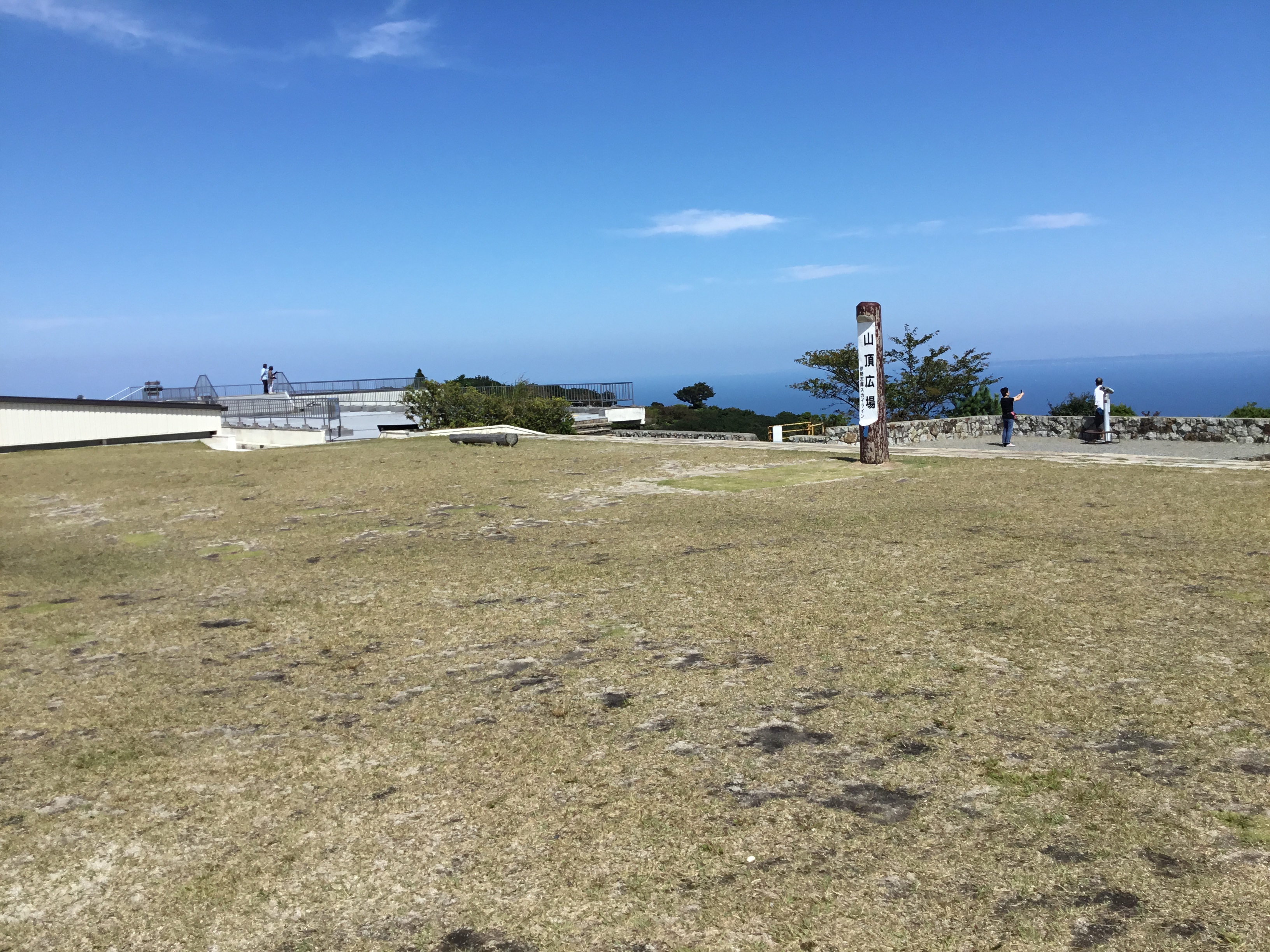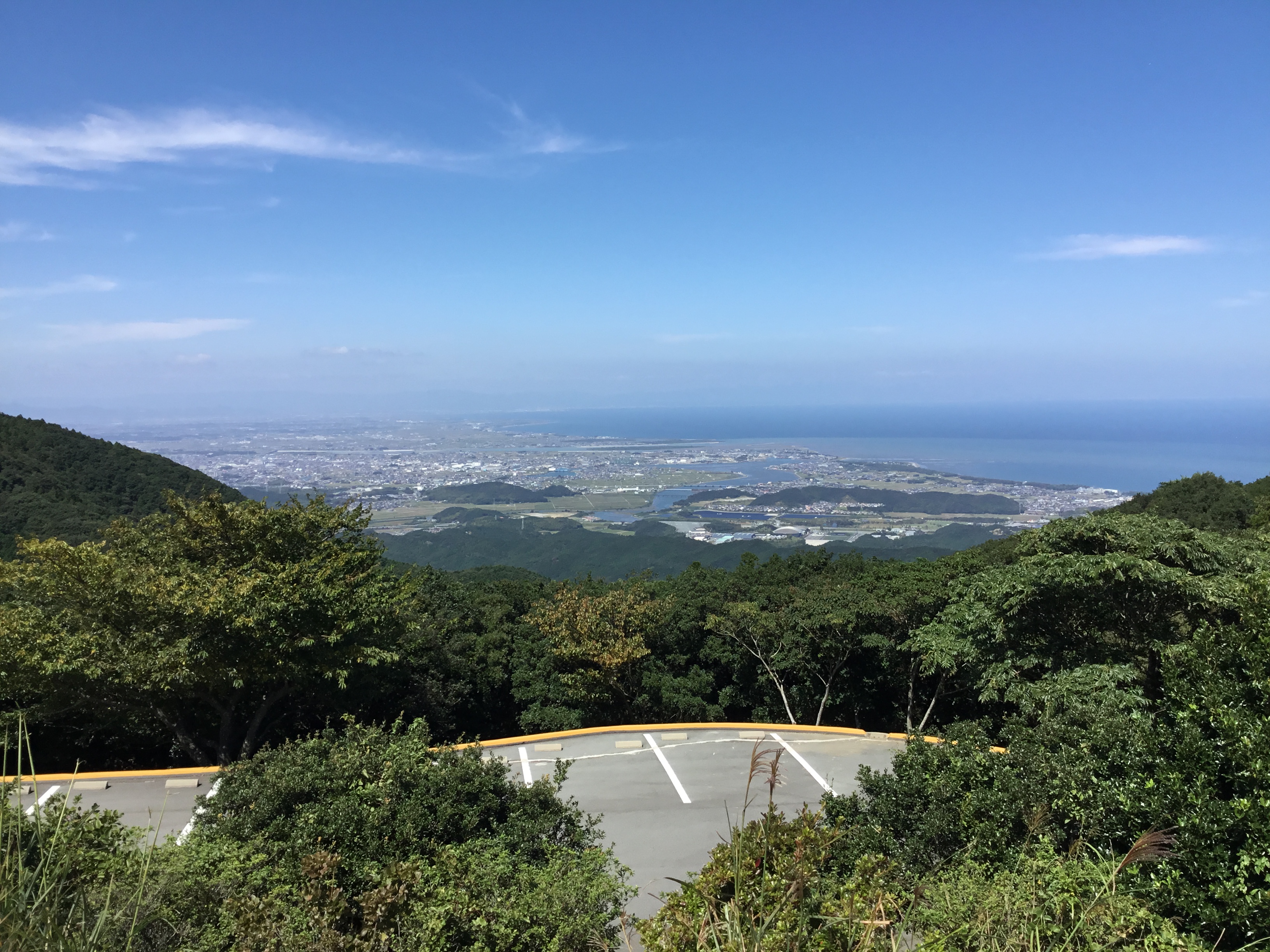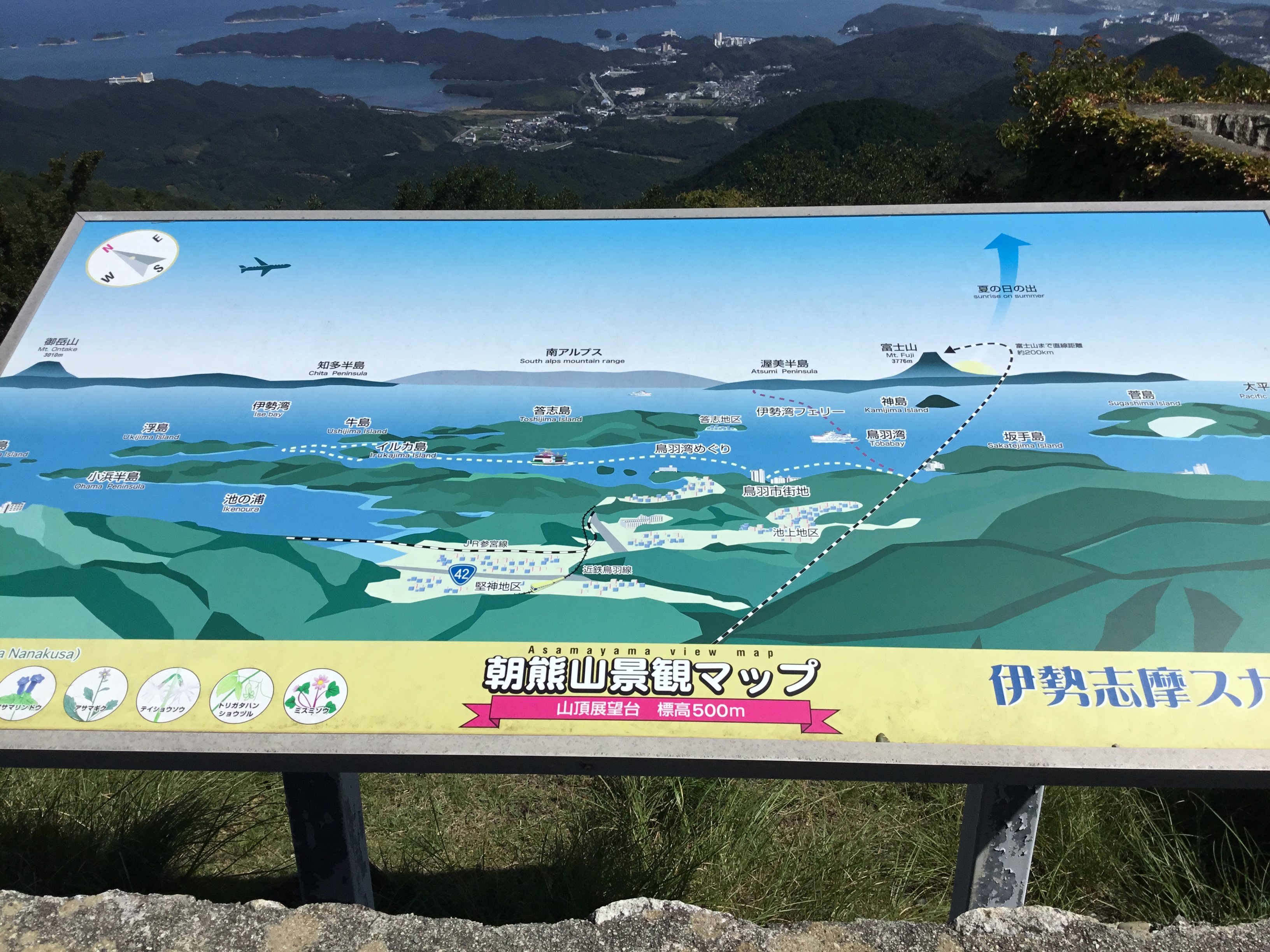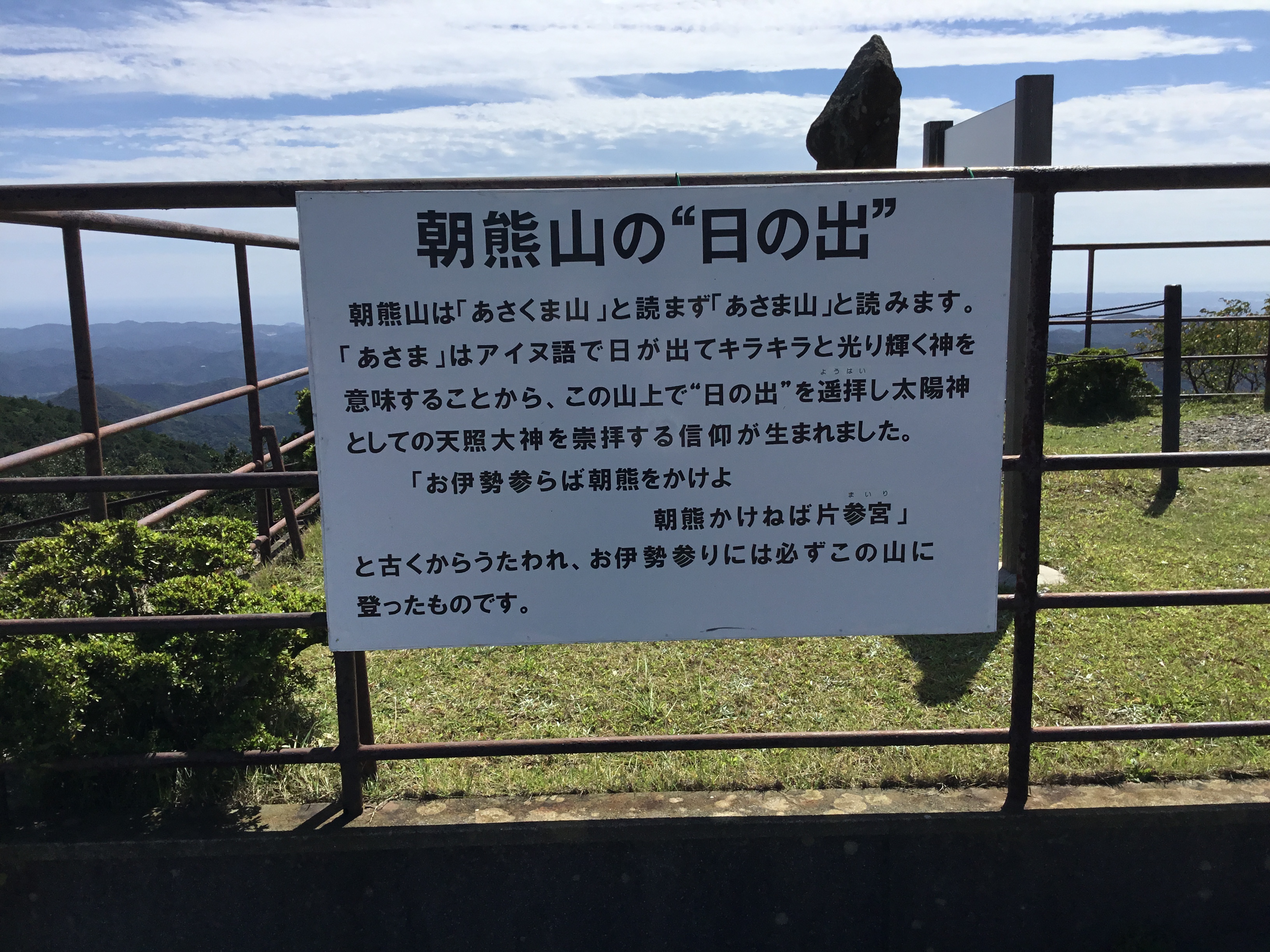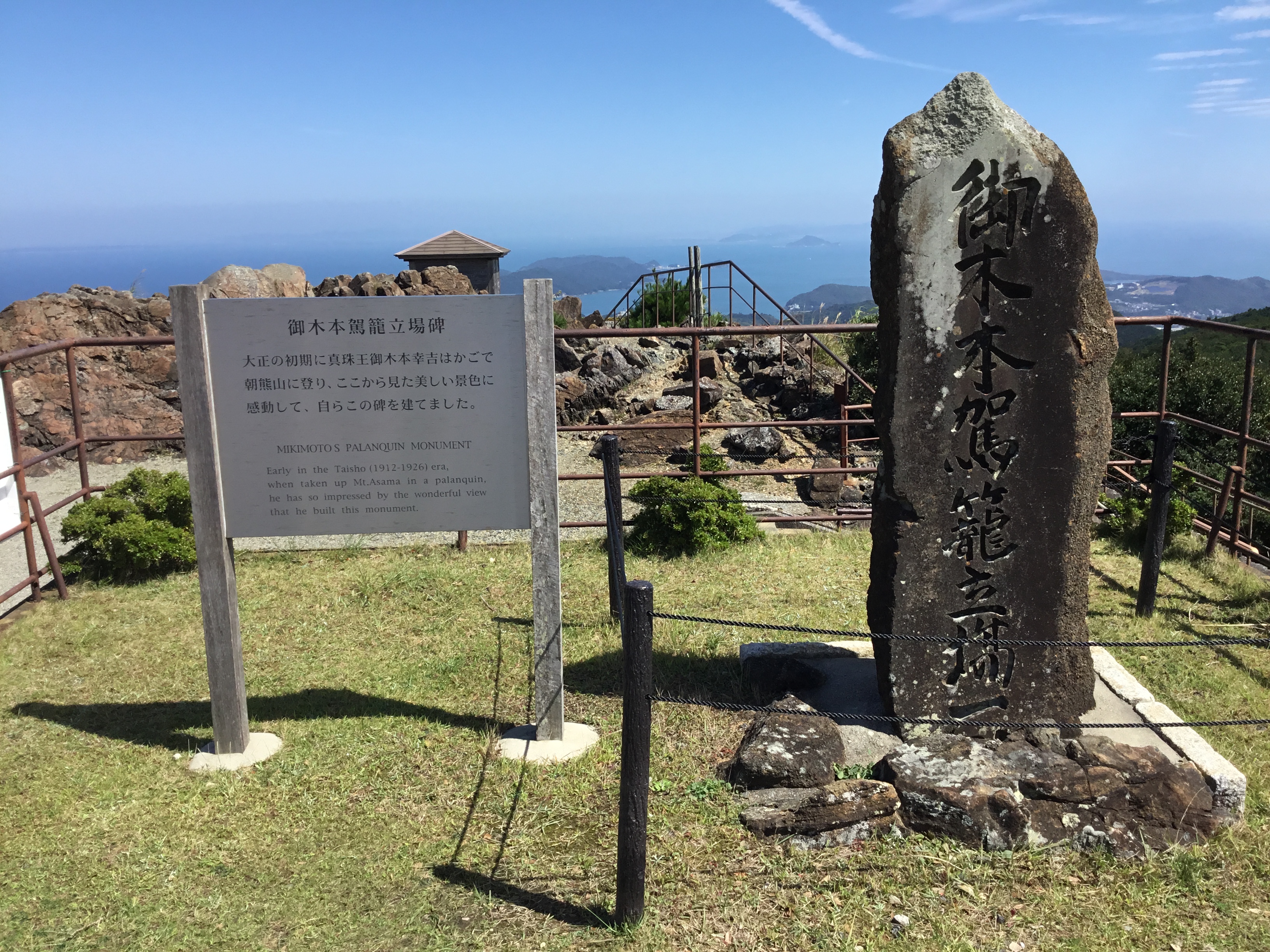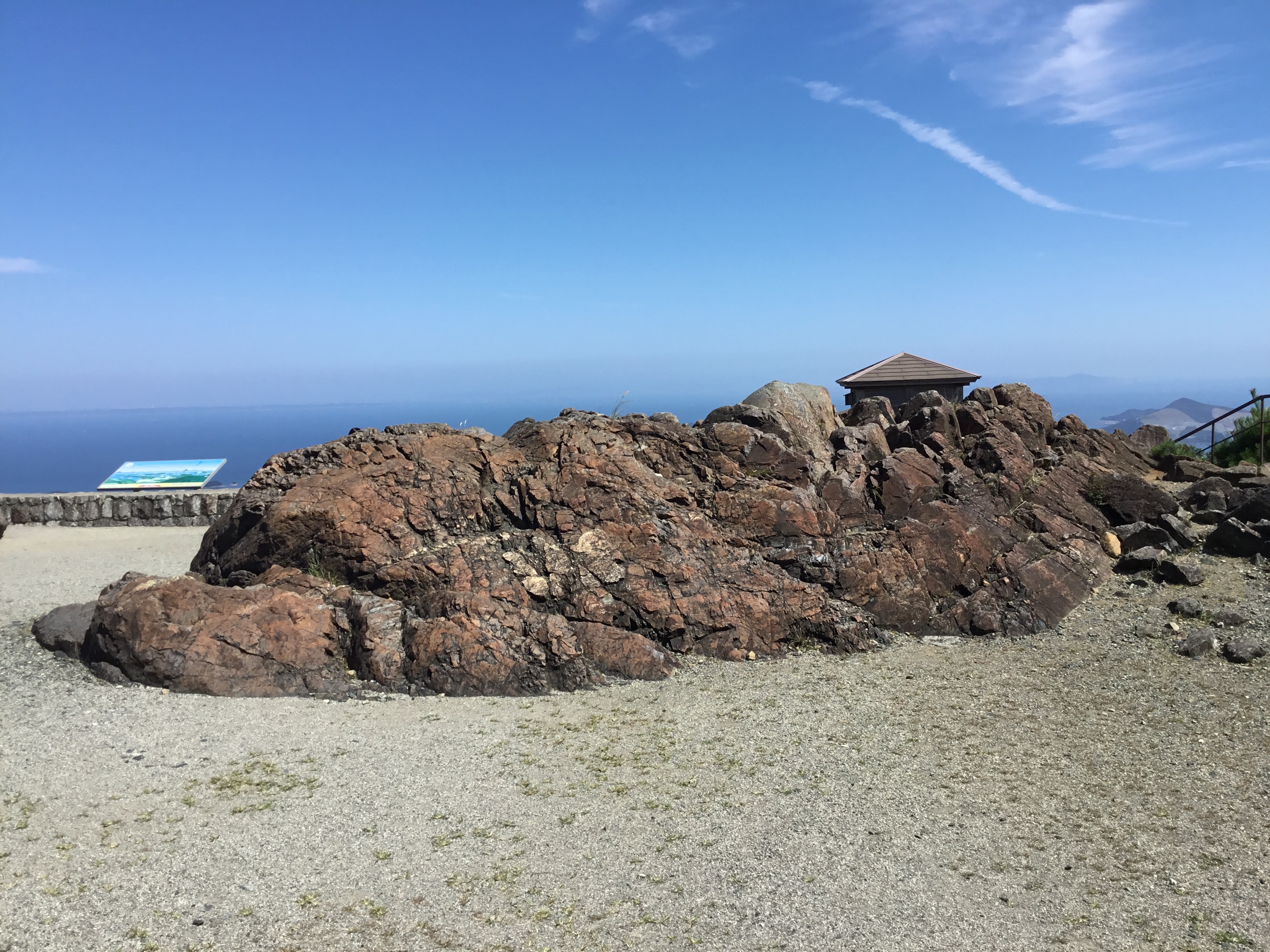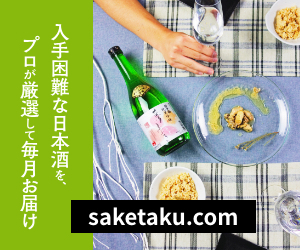- Home
- My Trip Diary
- From Toba to Ise – Going on Ise Shima Skyline to the summit of Mt. Asama
From Toba to Ise – Going on Ise Shima Skyline to the summit of Mt. Asama
- 2018/9/27
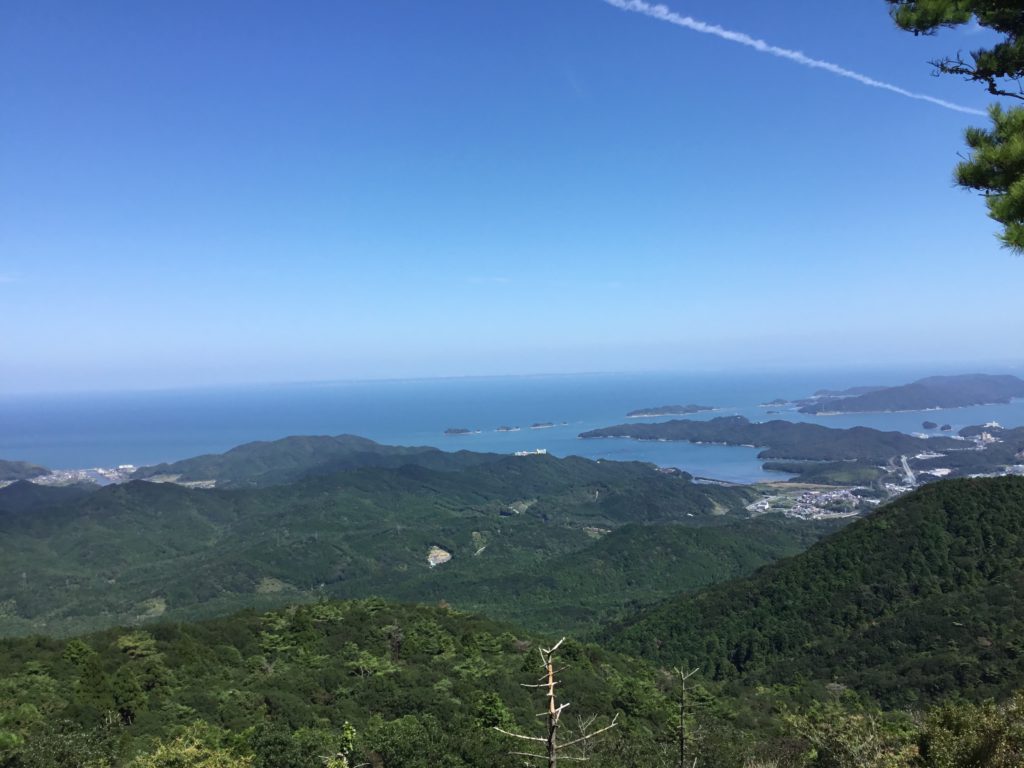
Good evening!
Thank you very much for visiting this blog.
Today I’d like to write about my trip to Mt. Asama in Mie Prefecture.
This mountain’s official name which is used in proper maps is “Asamagatake”, not “Asama Yama (Yama is “Mountain”)”. The name which is commonly used is “Asama Yama”, so I use this common name (Mt. Asama) in this blog.
This mountain is famous as one of 100 great landscapes of Japan, and also known as a good place to see the sunrise on New Year’s Day. Well, I didn’t know such things until I wrote this article, though ^^;
The reason I visited this mountain was almost nothing.
I was driving to Ise from Toba, and I unexpectedly took a toll road, and the mountain was on the toll road.
The fee of the road was too expensive for what it was, and it was almost a rip-o*f (it’s only my personal opinion).
I found Mt. Asama’s sign board when I was driving angrily.
The plan for the day was to visit Ise Shrine (Ise Jingu) and then to research restaurants in Nagoya, so I wanted to get to Ise as soon as possible.
However, it was a precious opportunity for me to be in the place, and the highway fee was high for nothing, so I decided to visit the mountain to make it worth the fee.
As a result, the value of the mountain was as much, or even more, than the fee^^
Now I report how it was.
Contents
Ise-Shima Skyline
After I finished researching Kyoto, I headed Toba City in Mie Prefecture which was the place to stay for the night.
I arrived at Toba at around 5 in the evening by driving my car on Daini Shinmei Expressway, and then Ise Expressway.
I had been on a very tight schedule, so I had dinner at the hotel and went to bed with only little drinking on the night.
I started at around 9 on the next morning, visited Toba City, where Toba castle ruins are like above photo, and left Toba for Ise Shrine around 10 a.m.
There are some routes to Ise Shrine; one is Ise Expressway, another is Prefectural Route 37, and the last one is Ise-Shima Skyline which I took.
I came without any pre-research about the route, and I got on Ise-Shima Skyline following the sign boards on the road.
I didn’t care which way to take at first, but I did when I saw the tolls of 1250 yen!
I was a bit upset because it was like the signs guided me to an expensive route.
But I gave it up as I had 1250 yen to pay, and it was more embarrassing to turn back in front of the tollgate.
As the name of the road “Skyline” says, the view from the road was very nice, and it was great to drive under a clear sky, and having the ocean with small islands at my back.
I thought that it would be even nicer if I was driving a sportscar such as Skyline (I love R32 GTR), or an open-top car like Mazda’s “Roadster”.
I had a good driving with no cars coming from ahead or following after on this mountain road. It was disappointing that I couldn’t take photos.
The view from Mt. Asama
After driving further, the signs of “Mt. Asama” and “Kongo Shoji” started to appear.
I wasn’t going to visit these places because I wanted to get to Ise Shrine as soon as possible.
However, I changed my mind because it could be an only opportunity to come to this place.
I turned right and headed the observation area of Mt. Asama.
I parked my car, and walked up to the building of a rest stop following the sign.
And then,
There was an open area like the photo above.
I went to the back of the photo, toward the sea.
The view lighted up my depressed heart.
That’s the power of the one of Nippon Hyakkei (Japan’s 100 great views).
The tourist board said that
Mt. Fuji could be seen from the point.
I tried to see it, but it was difficult with my bad eyesight.
Besides that, it was too foggy to see it.
I was surprised to see the board saying that it was only 200km between the point to Mt. Fuji in a straight line.
I thought that it was twice as longer, so I was surprised.
At this point, I was considering which to take to Gunma from 3 routes; Tokyo to Gunma on Tokaido, or on same Tokaido but via Yamanashi and Nagano, or Nakasendo which was the way I came. As I got to know that it was only 200km to Mt. Fuji, I thought Tokaido would be good.
What is on the view area
I walked on the spot thinking about such things.
I found this board.
It says that the name of “Asama” means a god who shines with sunlight in the language of the native people called Ainu who lived in the present Hokkaido Prefecture, and since this story, the people made a belief to see the sunrise on Mt. Asama to worship Amaterasu Omikami who is the god of the sun.
It was also said that “If you visit Ise Shrine, you must visit Mt. Asama, too. If you don’t, it’s still a half way.”
According to Wikipedia, this Mt. Asama is at “Kimon (the direction of the demon’s gate, the northeast which is said to be the direction of bad luck in one of the old philosophy in Japan)” from the inner shrine of Ise Shrine (it’s not the northeast accurately though).
Since the Muromachi period, the belief of Kongo Shoji, which is a temple in this Mt. Asama, and that of Ise Shrine connected, and the people visited this mountain after Ise Shrine as the board above says.
By the way, the common way to visit these shrines is;
Ise Shrine (Outer Shrine) => Ise Shrine (Inner Shrine) => Mt. Asama
In my case, I did like this;
Mt. Asama => Ise Shrine (Inner Shrine) => Ise Shrine (Outer Shrine)
I did a completely opposite direction unintentionally.
In Shikoku Henro (Shikoku Pilgrimage, visiting 88 temples all around Shikoku Island), the opposite way brings three times bigger benefit than that of normal way.
Does it apply to Ise Shrine…??
Mikimoto Kago Palamquin Monument
There is a stone over the board in the photo above.
This is the closer shot of the stone.
The board next to is said that once a man called Kokichi Mikimoto, who made a big success in his pearl cultivation business, came to this place by a palanquin.
He was so impressed by the scenery and he built this epigraph.
If he did it in the present age, he should have been criticized by the public^^;
Summit of the Mt. Asama
I found something like this below after walking further.
If my memory is correct (I’m not 100% sure because it was almost 3 months before), this rock is the top of Mt. Asama.
Ummm…, I can’t find right words to express my impression ^^;
Foot bath
In addition,
I found a footbath!
It was so nice to see such a beautiful view while having a footbath!
At the same time, I had a strange feeling to see a footbath on the top of a mountain^^;
I personally believe that the nature is the best as it is even it needs some human’s work in some cases.
I actually had a strange feeling about the summit rock as well, but in general, it was a comfortable and enjoyable place to see a beautiful scenery of one of 100 great landscapes of Japan.
But please understand that I also think that the nature “needs some human’s work in some cases”.
I don’t say that the nature always must be left as it is.
If the nature doesn’t get a care of human at all, they might lose their beauty, or humans cannot go close to them because they become too wild.
In the case of Mt. Asama as well, if humans didn’t take care of it, that beautiful view was not available because of woods.
After I enjoyed the view, I entered a shop to find Nihonshu, but unfortunately, they had none. Well, this kind of rest stops don’t have alcoholic drinks anyway^^;
After this observation spot of Mt. Asama, I visited Kongo Shoji Temple which also locates in Mt. Asama.
I’d like to write about it in the next blog.
It's our great pleasure if this article is helpful for you.
Restaurant Information
| Shop Name | |
|---|---|
| Prefectures | - |
| Tel | |
| Address | |
| Nearest Station | |
| Homepage | - |
| Business Hours | - |
| Holiday | |
| Introduction | |
| Sake List |
|



